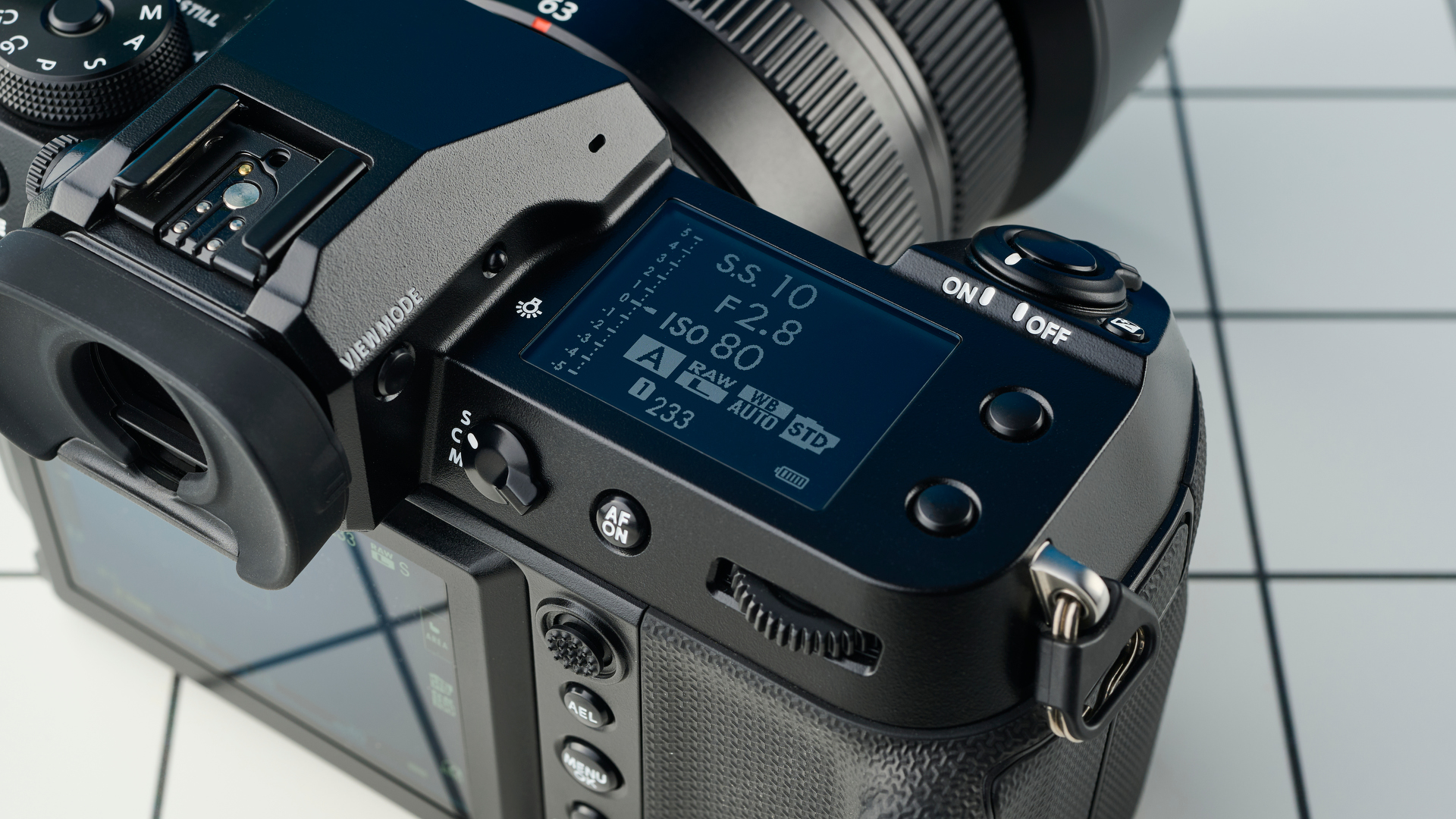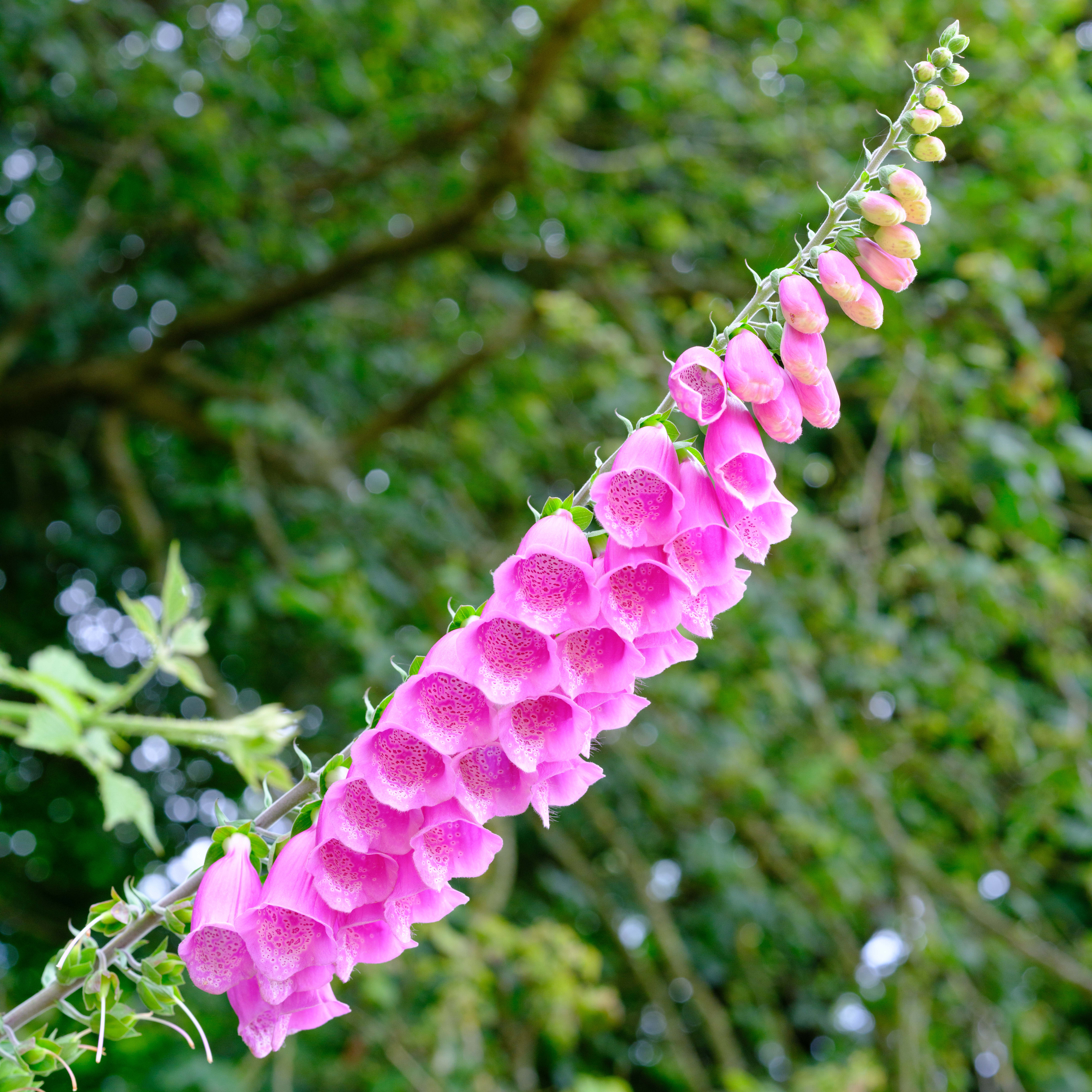
The Fujifilm GFX100S II is (surprise, surprise) the successor to the GFX100S and the slightly leaner, cheaper version of Fujifilm’s latest, top of the line GFX100 II. All three cameras feature a 100MP medium format sensor, putting image quality and detail above all else. And all three pack that beast of a sensor into a much more compact form factor than previous 100MP GFX cameras like the original GFX100.
The GFX100S II builds on its predecessor (the GFX100S — all these incredibly similar names get a tad confusing) in a few ways. Namely in the incorporation of Fuji’s latest AF algorithms and X-Processor 5 image processor. Where it differs from the flagship GFX100 II is in speed — the full fat model features a CFExpress port and faster shooting rates.
The GFX100S II is for professionals and hardcore enthusiasts who need outstanding image quality above all else, but could do with saving a few dollars over more feature-packed alternatives, providing they don’t need the specific benefits those models bring.
Is it worth it? Yes, although if money is no object, I’d be considering slightly pricier cameras instead. Find out more in my full Fujifilm GFX100S II review.
Fujifilm GFX100S II review: Specs
Fujifilm GFX100S II review: Price & availability

The GFX100S II is the latest in the S lineup of 100 megapixel medium format cameras, sitting around $2,000 cheaper than the full-fat GFX100 II at around £4,999 / $4,999 at Amazon. Make no mistake, this is a camera aimed at studio work, but it’s certainly palatable to an enthusiast with deep pockets and an obsession with image quality.
There are of course Fuji’s cheaper 50MP medium format cameras, including the GFX50S II, which will set you back around $3,500 and is (as laughable as this sounds given the price tag) therefore Fuji’s ‘entry level’ medium format camera. Medium format cameras are simply very expensive, so given the resolution on offer, the GFX100S II seems relatively good value when compared to, say, the +$8,000 Hasselblad 907X + CFV 100C or X2D 100C.

A large chunk of medium format expenditure comes with lens purchases. The glass required to resolve 100MP has to be fantastic, and if it weren’t then there wouldn’t be any point investing in such a sensor in the first place. Second hand GFX lenses can be found at a fraction of the price of new ones, though, and are generally much more affordable than Hasselblad or Leica medium format glass.
Fujifilm GFX100S II review: Design

The GFX100S II looks just like any other pro mirrorless body. At 5.9 x 4.1 x 3.4 inches, it’s rather deep, but feels and handles like any large full frame mirrorless, such as the Sony A7 IV or Canon EOS R6 Mark II. Body-only, the camera weighs 1.9lbs, so again, relatively trim for a medium format camera. That said, it’s similarly sized to and slightly heavier than the Hasselblad X2D 100C ($8,199), so the 100S II isn’t breaking ground in the wider medium format department. Regardless, I had no issues with the camera and a 63mm lens strapped around my neck for a 3-mile uphill hike.


It’s an incredibly easy camera to shoot with at the waist or on a low tripod thanks to the backlit top panel digital display and tilting 2.36M-dot LCD, both of which performed well in bright sunlight on my hike after I cranked up the LCD brightness to +2.
The GFX100S II’s viewfinder is absolutely beautiful, packing a whopping 5.76M dots. This is the same EVF as used on the Fujifilm X-H2/S, and is highly appreciated here at 100MP. I was able to zoom right into portraits and see the pores of my subjects’ skin.
Fujifilm GFX100S II review: Controls

The GFX100S II is laid out in sensible, professional fashion. Everything required, including Fn buttons, dials, the joystick and focus toggle are all within quick and easy reach — the Q button is in the same dangerously-knockable place as on the Fujifilm X-T50, although thankfully it never got in the way for me. There’s only a single top dial, with ISO and shutter assigned to front and rear command dials, so unlike Fuji’s retro enthusiast cameras, the GFX100S II is laid out for substance over style (although that isn’t to say it’s bad looking).



Fujifilm’s menu system is as usual: fine if you know your way around it, although it takes some getting used to and can be rather quirky — the ‘shoot without card’ setting, for example, rather than being in the save data menu as you might expect, lives instead within the buttons and command dial menu.
Fujifilm GFX100S II review: Connectivity
The GFX100S II features two UHS-II ports. There’s no CFExpress Type-B port as rapid shooting rates and high data capture video recording aren’t the priority here — for a CFExpress port, you’ll need to spend extra on the larger Fujifilm GFX100 II ($7,499).

Even though this is intended by Fujifilm to be the slower speed camera, the size of both the uncompressed RAW (200MB) and JPEG (68MB) files may well have you missing the faster write speeds and quicker file transfers obtained via CFExpress. In testing, the GFX100S II’s maximum shooting rate of 7fps (up from 5ps in the GFX100S) was sustainable for around 3 seconds, or 21 uncompressed RAW + JPEG (fine) shots, before the buffers filled and the camera ground to a halt. The GFX100 II will shoot at 8fps for around 55 frames at the same file sizes.

Ports include remote, mic, headphone, USB-C and Micro-HDMI ports, plus a flash sync hook up. As with any modern Fuji, you can also connect wirelessly to smartphones using the Fujifilm X app.
Fujifilm GFX100S II review: Autofocus
The GFX100S II packs, at the time of writing, Fuji’s latest AF algorithms and subject detection modes. That means detection and tracking modes for humans (eyes, faces), animals (eyes and faces), birds, cars and motorbikes, planes and trains.

By virtue of the larger sensor real estate, the GFX100S II’s AF will feel marginally sluggish versus the same system in APS-C cameras like the Fujifilm X-T5 — the tracking boxes not moving quite as sharply and lagging very slightly as subjects move. However, this wasn’t terrible and will be a big step up for anyone coming from older Fuji AF systems, especially on previous GFX bodies. I had no issues getting razor sharp faces and eyes in the portraits below.
Low light AF performance is solid, and the camera was able to detect and track our studio photographer’s face in almost complete darkness, at EV-5 and lower.
Fujifilm GFX100S II review: Image performance
With its 100MP sensor, the GFX100S II is all about image quality. Images are incredibly detailed, as you can see in the gallery below: the second image is an extreme crop into the first photo, where you can see the minute fibres inside the foxglove bell flowers.


This sharpness is, of course, enabled by Fuji’s sublime GF lenses, which do full justice to the sensor. If you need even more resolution, the GFX100S II features a pixel-shift multi-shot mode, which will be processed into a single 400MP file.

On offer as always are Fujifilm’s built-in color profiles, which are fantastic for shooting straight out-of-camera, saving you time grading. I love the soft tones of Astia for both studio and environmental portraits, as in the images above and below.

The smooth Acros + green filter is also fantastic for black and white portraits, delivering smooth skin tones, as demonstrated in the images below.

One of the major benefits of medium format sensors is high ISO performance. If you’re used to full frame or APS-C, it can initially come as a surprise that shooting at sensitivity values of up to ISO51,200 is totally possible. The side-by-side images in the gallery below are the same image, shot at ISO51,600 — the first is a JPEG export of the RAW file (exported via Adobe Lightroom), the second is the straight-out-of-camera (SOOC) JPEG. In both photos, noise is clearly present, but far from ruinous. The RAW file was showing significant bands of noise, which followed through into compressed exports — you can see these in the second gallery photo. This cleared up mostly with higher compression to 10MB for digital use, but is still visible in the left side-by-side image, first in the gallery below. I wouldn’t push as far as ISO51,200 if low compression, high resolution exports are required.



The X-Processor 5’s noise suppression dealt impressively with grain in-camera, as demonstrated in the side-by-side SOOC JPEG shot above. All the noise and banding was handled, with surprisingly little loss of fine detail, as you can see in the zoomed-in shot of Nutty’s eyes later in the gallery, where her nose fur is still well defined.


Dynamic range performance is also impressive. Above is a backlit photo of a GF lens, the front obscured in dark shadows. Bumping up the shadows and exposure in Adobe Lightroom reveals plenty of detail retained in the shadow with very little noise at the camera’s lowest sensitivity of ISO80. There were no blown out highlights in the background softbox, either — a very good show.
Fujifilm GFX100S II review: Stabilization
With a sensor this large, stabilization takes a noticeable hit if you’re used to smaller sensor cameras. I was able to shoot handheld down to about 1/25 sec in the photo of the Panasonic Lumix S9 below, and still come away with a reasonably sharp shot.

Any lower, though, and blur became a serious issue. On smaller cameras, including Fuji’s own APS-C models like the Fujifilm X-S20, I’ve been able to slow shutter speeds to around ½ sec without blur from camera shake. Just something to be aware of if coming from an APS-C Fuji body.
Fujifilm GFX100S II review: Video performance

The GFX100S II is not a video camera, so I won’t bandy around with video specs. It’ll shoot 4K/30P if you need to capture some clips, but if you want a serious video camera then you ought to be looking at the Panasonic Lumix S5IIX.
Fujifilm GFX100S II review: Battery life

The GFX100S II utilizes Fujifilm’s NP-W235 battery, where it’s often good for over 700 APS-C frames. At 100MP, Fujifilm rates battery life at around 530 frames. With our first test camera and battery, I only achieved around 260 shots before getting a red battery flash icon. Fujifilm sent us a replacement battery, which fared much better, and well over 500 shots should indeed be achievable in general use.
Fujifilm GFX100S II review: Verdict

Medium format cameras are expensive, especially with 100 megapixels sitting behind the lens mount. By the standard of other similarly endowed cameras like the $8,000 Hasselblad X2D 100C or $7,000 Fujifilm GFX100 II, the $5,000 GFX100S II is a pretty good deal, especially if the budget won’t stretch. Images are phenomenal, the autofocus is as good as it gets on a medium format camera, and the camera handles like a much smaller mirrorless body.
However, if money is no object — and if you’re able to afford this camera and lenses in the first place, I imagine it won’t be — either the full fat GFX100 II or the Hasselblad X2D 100C will likely be a better purchasing decision. If you can sacrifice AF and shooting speeds, the Hassy edges both Fujis on images. While the GFX’s stills are utterly outstanding, they just lack the magic of images from that 100MP Hasselblad sensor: while the GFX images made me gasp, Hasselblad images made me cry. What’s more, I really missed having a CFExpress port on the GFX100S II, so if write, transfer and shooting speeds matter, the GFX100 II definitely warrants the extra spend.







